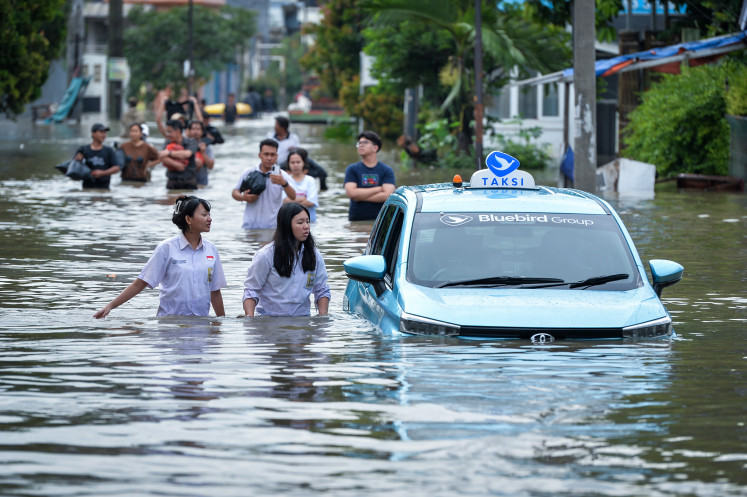Popular Reads
Top Results
Can't find what you're looking for?
View all search resultsPopular Reads
Top Results
Can't find what you're looking for?
View all search resultsPLN gets $435m to finance non-Java mobile power plants
State-owned electricity company PLN has secured US$435 million in financing to develop gas-fired mobile power plants (MPP) as part of the government’s goal to procure 35,000 megawatts (MW) of fresh electricity capacity by 2019
Change text size
Gift Premium Articles
to Anyone
S
tate-owned electricity company PLN has secured US$435 million in financing to develop gas-fired mobile power plants (MPP) as part of the government’s goal to procure 35,000 megawatts (MW) of fresh electricity capacity by 2019.
The funds, which will be obtained through an export credit agency (ECA) scheme from Canada and Hungary, will be used to finance eight MPP with total capacity of 500 MW across the archipelago, primarily in areas outside Java with low electrification rates, the company stated on Saturday.
“The financing will speed up gas-fired power plants that go into the 35,000 MW program,” PLN finance director Sarwono Sudarto was quoted as saying by Antara news agency.
A signing ceremony took place in Jakarta on Friday for the agreement between PLN, Export Development Canada (EDC) and the Hungarian Export-Import Bank (HEXIM). The 12-year term loan was secured without a government guarantee but with competitive and fixed rates that minimize the risk of interest rate fluctuations.
“The ECA scheme without a government guarantee is one of the alternatives for PLN financing, apart from bonds issuance, bank loans, as well as credit institutions, both bilateral and multilateral,” Sarwono said.
He added that financing for the government’s flagship 35,000 MW program served as evidence that PLN remained committed to providing electricity to people across Indonesia, as it expected only 26,000 MW to start operating in 2019 with a focus on power plant developments outside of Java.
The eight power plant projects with 500 MW to be developed through MPP will be located in Lampung (4x25 MW), Pontianak in West Kalimantan (4x25 MW), Bangka (2x25 MW) in Bangka Belitung, Riau (3x25 MW), Belitung in Bangka Belitung (25 MW), Ampenan in West Nusa Tenggara (2x25 MW), Paya Pasir in North Sumatra (3x25 MW) and Nias (25 MW) in North Sumatra.
“What’s more important is that PLN as an agent of development has supported electricity procurement that is sufficient and is supportive of the need for electricity as an engine for both regional and national economic growth,” Sarwono said.
Previously, PLN president director Sofyan Basir said the company would not slow down the development of power plants outside Java, which already has a safe 30 percent surplus in electricity reserve margins, the difference between capacity and peak demand.
The margins are at a meager 7 and 8 percent in Sumatra and Kalimantan, far lower than the International Energy Agency’s (IEA) guidelines of between 20 and 35 percent.
“The location selection for the MPPs is based on field conditions in which many of the regions still suffer from low electricity supply, whereas demand continues to grow, hence requiring the right and a quick solution,” said PLN corporate communications head I Made Suprateka.
The 500-MW MPP will be managed by the company’s subsidiary PLN Batam from construction to operation.
Along with the MPP development, PLN will also build permanent power plants such as steam-driven power plants in the same areas. When they have all been constructed and can feed enough electricity to the regions, the MPPs can be relocated to locations that still need extra supplies.
The MPP use General Electric power plants under an engineering, procurement and construction (EPC) scheme. They consume natural gas, which is considered an environmentally friendly fuel, and can be relocated according to need.
“These MPPs are expected to make electricity procurement reach Indonesia’s remote areas so the economy can grow and the 99.7 percent electrification ratio target in 2019 can be achieved,” said Sarwono.










